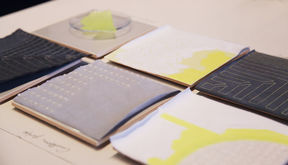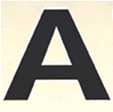Cellulose turning into a supermaterial of the future

The researchers are working together to develop new biomaterial applications within the Design Driven Value Chains in the World of Cellulose (DWoC) 2.0 project coordinated by VTT.
The DWoC project is seeking new design-driven applications for cellulose and is developing related technology as well as exploring new ways to create value in cellulose-based ecosystems. These new materials and innovations can replace fossil-based raw materials in textile products, interior decoration elements and car interior materials.
"The Government Programme emphasises the importance of the bioeconomy for Finland's future and economic renewal. Renewal necessitates giant research-driven leaps, strong risk taking and national investment in research and innovation funding. Wood the –“green gold” of Finland – is a renewable raw material and wood cellulose can be converted to a golden opportunity when we find new high added value applications alongside the traditional paper and pulp industry," says Project Coordinator Johanna Buchert, Vice President, Research, VTT.
Broad cooperation is required to promote the bioeconomy and sustainable development. During the first phase of the DWoC project various ways to successfully combine design and materials research were tested. This gave rise both to preliminary product concepts and ideas and to promising technology innovations. During the course of the project yarn made directly from pulp fibre suspension was developed, for example. Manufacturing was started by Spinnova Oy at the beginning of 2015.
Currently the second phase of the project has started in which textile applications such as 3D printing of cellulose are being developed and the application of cellulose-based materials in the built environment is being studied. In addition to new materials and products, new types of textile manufacturing equipment and processes are being developed. Tekes's funding will enable various operators to collaborate, experiment and seek innovations to create new business ideas and opportunities.
The future commercialisation of new products and concepts is an important objective. The project will investigate formation of a value producing network of enterprises around cellulose-based material which includes, among others, design-sector companies.
The DWoC project aims to share information about the potential of cellulose materials and to strengthen the broad-based collaboration network both in Finland and the rest of the world. In order to achieve the national objectives the participation of operators in various sectors is needed, including funders, traditional as well as new companies, research institutions and universities. There is a strong belief in Finland's future as one of the superpowers in the generation of a new cellulose industry.
The DWoC project (31 March 2015 – 1 April 2018) has progressed to the second phase, and has received EUR 4.9 million in funding from Tekes. Research partners in the project are VTT Technical Research Centre of Finland Ltd, Aalto University, Tampere University of Technology and the University of Vaasa's Department of Management.
For more information, please contact:
VTT Technical Research Centre of Finland Ltd, Johanna Buchert, Vice President, Research, DWoC Project Coordinator, tel. +358 50 5116603, johanna.buchert@vtt.fi
VTT Technical Research Centre of Finland Ltd, Ali Harlin, Research Professor, tel. +358 40 5332179, ali.harlin@vtt.fi
Aalto University, Designer in Residence, Pirjo Kääriäinen, tel. +358 9 47001, pirjo.kaariainen@aalto.fi
Aalto University, Professor Ainomaija Haarla, tel. +358 50 344 1693, ainomaija.haarla@aalto.fi
University of Vaasa: Henri Hakala, Project Director, tel. +358 29 449 8440, henri.hakala@uva.fi
Tampere University of Technology: Professor Jyrki Vuorinen, tel. +358 40 849 0110, jyrki.vuorinen@tut.fi
Read more news

Study: Internal combustion engine can achieve zero-emission combustion and double efficiency
A new combustion concept that utilizes argon could completely eliminate nitrogen oxide emissions from internal combustion engines and double their efficiency compared to diesel engines.
A new way to measure contagion: the gut bacterium behind blood poisoning can spread like influenza
Neither the antibiotic-resistant nor the highly virulent strains are the most transmissible.Tonmoy Saha Presents Textile Recycling Research at CIMANET Seminar
The CIMANET Research Seminar, held under the theme “Future Leaders in Circular Materials Bioeconomy,” took place on Thursday, December 4, at the Scandic Marina Congress Center in Helsinki.






